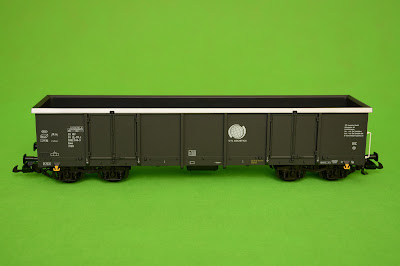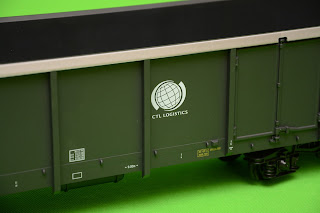Building models made of card stock or cardboard is very popular. People create amazing things using these simple materials. I've decided to try it myself, too, but since I have no interest in ships or tanks, I started looking for something for my N-scale layout.
Metcalfe is a very well recognized manufacturer of paper kits for train layouts. Their offer covers a wide selection of structures in different scales. These products are not expensive, so I've picked two different pieces at once when placing my order online: PN113 engine shed and PN821 wooden house.
I've also bought the UHU glue recommended by Metcalfe as well as a set of applicator bottles. Those are supposed to offer an "ultra fine tip" and help when using the adhesive on small elements.
The engine shed set contains quite a lot of parts. Most of those are thick paper but we also get windows made of transparent plastic sheet.
The manual is 8 pages long and covers the construction process step by step. It's very clear that a different approach was taken here compared to - for example - Faller products. The documentation features a lot of text but the parts are not tagged almost at all. It actually resembles more a set of notes taken by your buddy than an official guide.
The wooden pavilion kit is much smaller. It's just one sheet of a card stock, a small sheet of laser cut cardboard and a piece of a plastic film.
The manual is shorter, too. We get just a few small pages containing directions. An interesting aspect of the document is that it features sections that need to be cut out and glued to the structure. So the guide becomes part of the model, too.
Alright, time for some work. I somehow assumed the bigger building would be easier to assemble, and so I started with the engine shed. The first steps seemed easy even though the manual proved not to be very detailed. In particular it does not describe every single part we need to use, so a little bit of imagination is needed. It's not a big issue however, since the model is not really that complicated.
On my third evening of work the building started looking interesting. I have to say I'm impressed by how the model is designed. Each wall consists of several layers which creates a very nice depth effect. The elements are nicely printed with a lot of small details.
The glue applicators proved very useful, too. They worked great and definitely made the assembly process much, much easier.
Unfortunately I've encountered also some serious challenges. Several of the walls needed to be folded 180 degrees and glued back to back. This seemed easy at first, but it turned out the bond was not strong enough to hold the parts together.
My walls came apart. I simply glued them back. Then the problem occurred again, and I fixed it one more time using clips and waiting for the model to dry overnight. All seemed fine and then... three days later... it fell apart one more time...
I have to admit - for me this was not fun anymore. And I've decided not to pursue the idea of paper models any further. Yes, I gave up :(
The only structure I've managed to finish was the small office building. This one did not feature any back to back folding and the glue held very well in this case. Here's the final outcome.
Personally I think the house looks great considering it's made of paper. It does not feel flat at all, since the walls are multi-layered. It features a lot of details, that are simply printed on the card stock pieces. Except for not being perfectly rectangular, it does not look worse than plastic models. In fact - considering the facades which expose every single brick (and in different shades of red, too) it does look even better.
Well, paper models are not for me. My first attempt at building those is a clear failure. Plastic pieces and a glue that dissolves the material is what I enjoy. But it does not mean the Metcalfe products are bad. Actually, I'm convinced the opposite is true. The kits are very well designed and made. I'd recommend them to anyone who feels confident about working with paper.























































